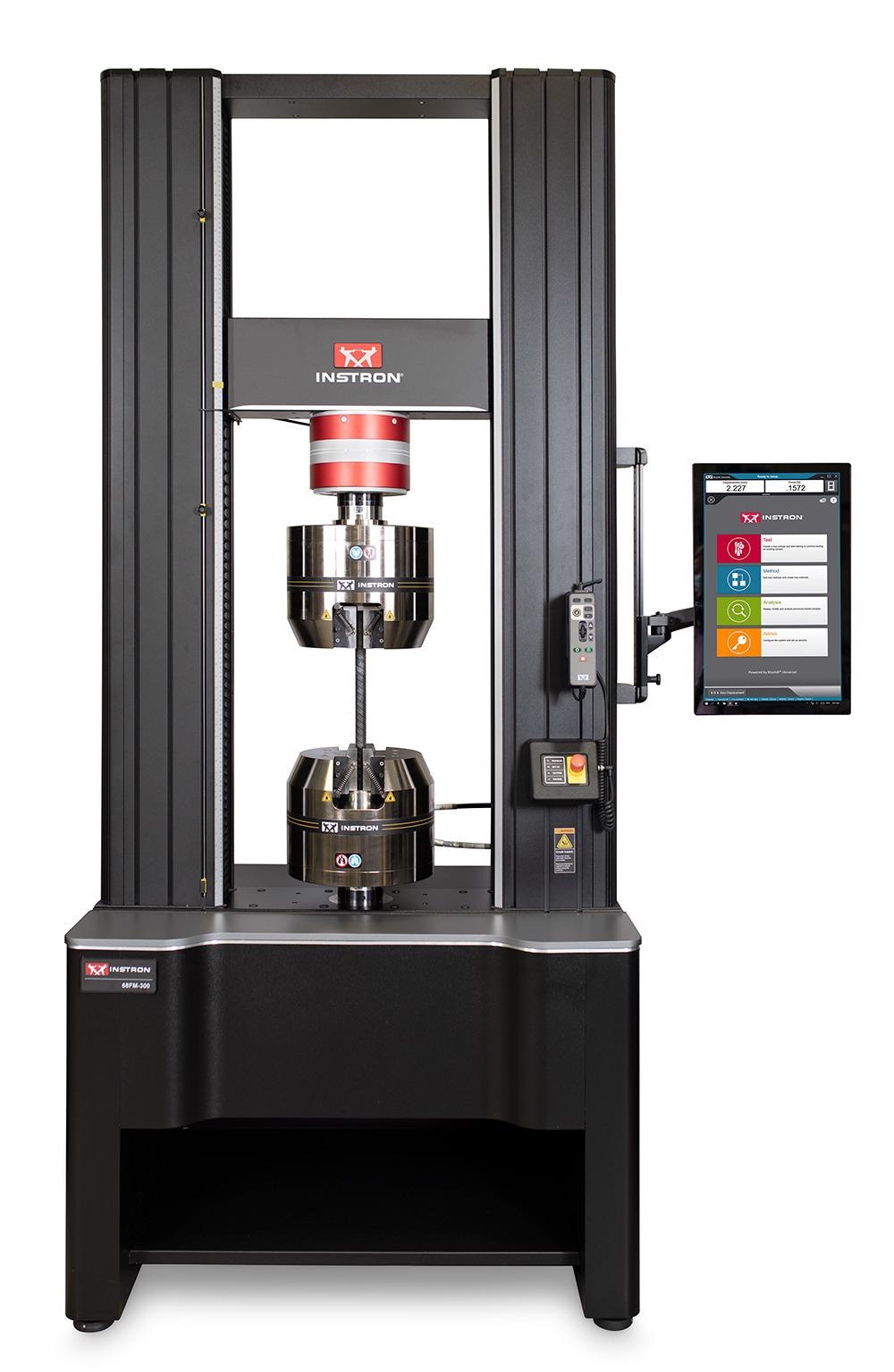New High Force Floor Models Ranging up to 300 kN Force Capacity
Norwood, MA - Building on a 75-year legacy of excellence in mechanical testing, Instron is proud to announce the capacity expansion of the 3400 and 6800 Series universal testing systems. The all-new 3400 and 6800 Series high-force universal testing systems are successors to Instron’s popular 3300 and 5900 Series systems and are now available in force capacities ranging up to 300 kN. With the higher capacities come a host of new features focused on durability, ergonomics, and simplifying mechanical testing.
Built to Perform and Built to Last
Instron’s 3400 and 6800 Series provide a new dimension of performance and durability. Reduction in debris ingress has been achieved through gasketing and a patent-pending airflow design. The frames have been fortified against shock and vibration, allowing for continuous testing at the maximum rated frame capacity. Additional design steps were taken to locate internal electrical and mechanical hardware safely away from the test area, while an abrasion-resistant coating is applied to the 12mm metal work surface for durability.
Both series are equipped with maintenance-free brushless AC servomotors supporting continuous cyclic, creep, and relaxation testing for up to 10 days. The 3400 Series provides a data acquisition rate up to 1000 Hz and the 6800 Series increases the data acquisition rate up to 5000 Hz, ensuring that a test event is never missed.
The culmination of these enhancements is a universal testing system built to perform today and for years into the future.

New High Force Floor Models Ranging up to 300 kN Force Capacity. Credits: Instron
User Safety
Accidents occur at the highest frequency during test setup, and Instron has taken on the challenge of reducing the rate of recurrence with their patent-pending Operator Protect system architecture along with Safety Coaching. Operator Protect and Safety Coaching are built into the 3400 and 6800 Series systems and are designed to limit the machine’s movement during test setup while providing visual machine status reminders to the operator and bystanders.
When the system is in setup mode, several new features are present to reduce the risk of accident. Crosshead movement speed is restricted, the Smart-Close Air Kit restricts gripping pressure on low force grips to a pre-defined safe level, and Safety Coaching uses system lighting and a color-coded border around the software to visually indicate that the machine is in safe setup mode. Once the operator is ready to begin testing, a virtual interlock button allows the enablement of the system’s full crosshead speed, full grip pressure capabilities, and triggers visual cues that signify that the safety limits have been removed for testing. System movement on the 3400 Series is controlled from a redesigned Operator Panel, while the 6800 Series introduces a new ergonomic handset that allows the user to operate the system from a distance.
User Comfort
To improve operator comfort, the new 3400 and 6800 Series systems are available with a tall base option. The tall base moves the testing platform to an ergonomically comfortable height and adds a shelf for storage. The 3400 and 6800 Series have an all-new contoured base design allowing the operator easy access to the test space for fixture assembly and a comfortable reach to the control panel on the 3400 Series or the handset on the 6800 Series.
Testing Repeatability
All 6800 Series systems are equipped with an Auto Positioning feature which remembers a pre-assigned fixture separation and the starting location for the assigned test method. When using a test method configured with Auto Positioning, an operator is shown a picture of the assigned fixtures, reminded to set travel limits, and notified when and where the crosshead will move for test commencement. The goal of Auto Positioning is to improve data repeatability and reduce testing errors.
Collision Mitigation
The 3400 and 6800 Series systems are equipped with a new Collision Mitigation feature to help reduce accidental equipment and specimen damage. Collision Mitigation enables the systems to continually monitor force during jog and return, and will automatically stop the crosshead movement if an unexpected force is detected. Mishaps happen, and the goal of Collision Mitigation is to reduce the negative financial and downtime impacts associated with such occurrences.